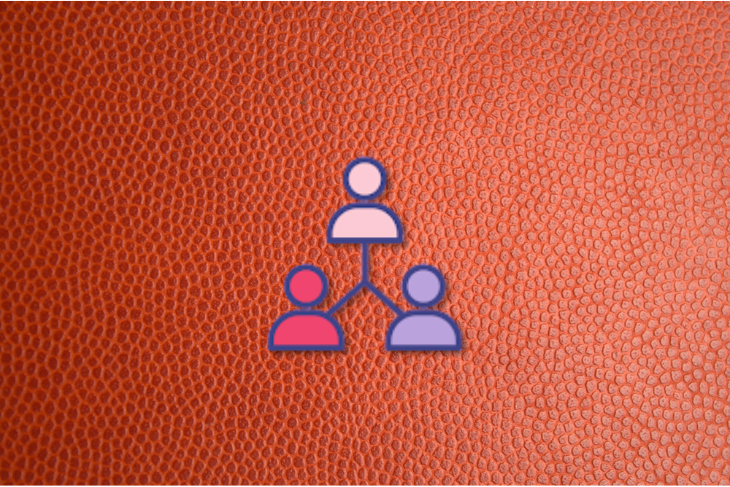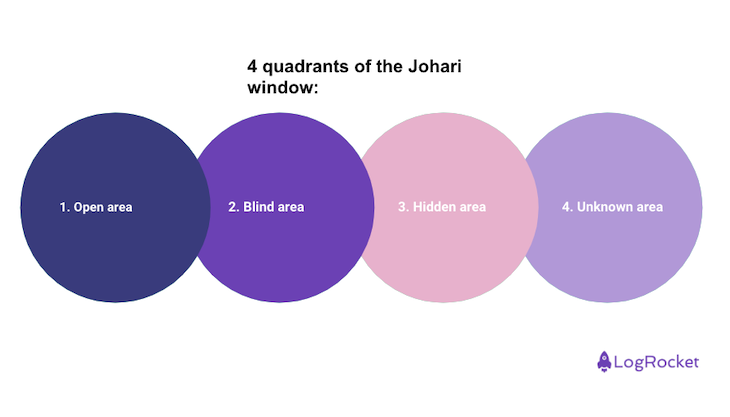Often managers think of technical or hard skills when they think of professional development. However, soft skills can vastly improve a workplace and productivity. Ignoring soft skills can lead to miscommunications, lack of trust, and mediocre work performance.

If you want a team that works effectively, collaborates, and openly communicates, then you need to take a look at your team members’ personalities. One tool to use is the Johari window. It focuses on self-awareness and discovering whether a person knows how they’re perceived by others.
After all, a team member can’t change bad habits or behaviors if they don’t realize they exist.
Let’s discuss what the Johari window does, how it works, and how it can help change your team dynamics.
The Johari window is a framework for identifying perceived attitudes, behavior, and habits of employees. Adjectives are chosen to describe you (by yourself and your peers) and then inserted into four quadrants based on the level of awareness of yourself or others.
Based on these results, participants can gain a better understanding of their relationship with themselves and with others. The Johari window is effective for team building, communication, and personal development in a management context.
The Johari window can help your team in multiple ways. Once the Johari window is completed, your team members stand to gain:
Product managers may be tempted to skip using the Johari window since it focuses on personality traits and not on hard skills like development. However, there are many benefits of your team gaining self-awareness of their personality traits. A cohesive team that understands each other’s communication styles, strengths, and weaknesses is better equipped to handle challenges faced on the job.
Soft skills are necessary to succeed in the work. The Johari window can help your team members identify strengths and areas for improvement. It’s easy for your team to participate since it only involves choosing adjectives that best describe themselves and their peers.
The Johari window is a two-by-two grid made up of four quadrants. Each quadrant represents a level of self-awareness or awareness by others. Adjectives are placed into each quadrant based on the results. Let’s dive into the meaning of each quadrant and how to utilize it to gain self-awareness:

In theory, the open area is the most important quadrant. It contains adjectives describing you that are chosen by yourself and your peers. These adjectives reveal the qualities that you recognize in yourself and are acknowledged by your peers.
In an ideal Johari window, the open area will have the largest space. When this is the largest space, it indicates you have self-awareness and your team knows you. Consequently, your team probably has a better chance of trusting each other, working together, and communicating openly.
If the open area isn’t your largest quadrant, then you have to work on your blind and hidden areas. Otherwise, you and your team might not view you the same way which can cause disharmony and mistrust.
The blind area covers adjectives you didn’t choose for yourself but others use to describe you. For better or for worse, peers can reveal your best qualities that you don’t know about yourself or point out deeper issues with your behavior.
Ideally, a participant should have a small blind area which would indicate the person has self-awareness of their behavior. If it’s larger than your open area, then it’s possibly a sign your team isn’t communicating with you or you lack awareness of how your behavior is perceived.
Quadrant three of the Johari window is the hidden area. These are adjectives you use to describe yourself and are hidden from others. Adjectives in this quadrant could be purposefully hidden from your peers or maybe only you believe that you have this quality.
The hidden area quadrant can be deeply personal, and it may not always be the best idea to share your private thoughts with coworkers. In other scenarios, it may be necessary to open up to your colleagues. For example, anything that is affecting your work performance could lead to misunderstandings if you don’t share your experience.
The unknown area represents adjectives that neither you nor your peers chose to describe you. It doesn’t necessarily mean you don’t have those attributes, but it could mean you have the potential to grow in new areas. This is especially true if you don’t have much experience in your field.
The goal of the Johari window is for the participant to have a large open area and reduce blind spots. Let’s go over the four-step process for making the Johari window, and then we can discuss examples of how you can use the results to improve your communication and leadership skills:
Create a list of adjectives and characteristics. The Johari window suggests the following list of 55 adjectives:
You’ll want to choose a set number of adjectives of around five or six. Then you can pick the characteristics you feel describe you the best.
Provide the same list of adjectives to your peers and ask them to choose a set number of adjectives that best describe you. If you picked five adjectives in the previous step, then ask your peers to pick the same number of characteristics. You’ll want to make this step anonymous to get the most honest responses.
Based on your results, you can slip the chosen adjectives into the proper quadrant. Taking feedback from your peers can be daunting, but it can also be eye-opening and affirmative.
You may learn you have some positive characteristics that you didn’t know before. Or you may learn some negative qualities that you can improve upon. Either way, you can continue on the path of self-awareness and personal development.
The Johari window gives you insights into your attitude and behaviors. But it doesn’t really mean anything if you don’t do anything about the information you received about yourself. Creating an action plan is crucial to developing new skills and becoming a better employee.
The action plan will look different for everyone, but there should be a focus on changing undesirable behaviors or having professional development goals. It could also include a plan to practice more self-awareness. Some ideas for a possible action plan include:
Ultimately, an action plan is necessary to ensure a person is taking meaningful steps to ensure self-awareness and developing skills to support themselves.
The Johari window is a useful tool for discovering conscious and unconscious biases. It also explores your relationship with yourself and others. Once your team develops a better understanding of their coworkers, it can make it easier for people to trust and communicate with each other.
Along with an increased sense of self-awareness, participants can also discover areas of improvement for their professional development. They may become more engaged with their work and decide to learn new skills to increase their capacity.
Ultimately, the Johari window helps people find their blind spots, identify their strengths, and improve their understanding of people and themselves. By actively working to obtain positive qualities, a team can build meaningful relationships and trust each other.
Featured image source: IconScout

LogRocket identifies friction points in the user experience so you can make informed decisions about product and design changes that must happen to hit your goals.
With LogRocket, you can understand the scope of the issues affecting your product and prioritize the changes that need to be made. LogRocket simplifies workflows by allowing Engineering, Product, UX, and Design teams to work from the same data as you, eliminating any confusion about what needs to be done.
Get your teams on the same page — try LogRocket today.

A practical five minute revenue estimation method to help product managers compare ideas, drop low impact features, and prioritize smarter.

A practical guide for PMs who want to stop being bottlenecks, delegate smarter, and lead teams effectively with a clear ownership framework.

Stop letting unreliable data block features. Treat data as inventory to track quality, ownership, and ship with confidence.

Learn why slide decks slow teams down and explore better tools like whiteboards, PRDs, and prototypes to improve collaboration and alignment.